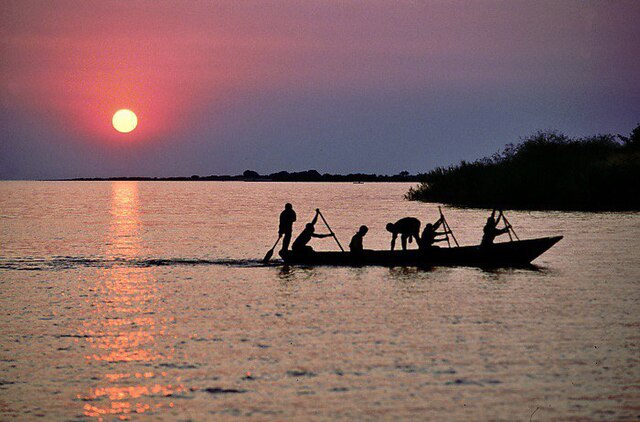Originally published September 17, 2024. A May to July 2024 fishing ban has recouped the sardine stock in Lake Tanganyika, with supplies now offsetting prices.
Nestled on the western border of Tanzania with the Democratic Republic of Congo, Zambia and Burundi, Lake Tanganyika is the world’s second largest freshwater lake by volume.
According to a March 2018 story by the National Geographic, the lake’s fisheries have drastically declined from warming which kills nutritional algae.
Fishing is back now primarily thanks to the ban and the Food and Agriculture Organization (FAO)’s sustainability program, FISH4ACP.
The neighborhoods of the historically important Kigoma-Ujiji in particular are seeing a resurgence of sardines in plenty.
According a Daily News story, fishermen are using solar-powered tents enclosing nets to attract the little fish at night. The lights draw in the fish and the harvesters haul them to drying spots the next morning.
Although the haul is no longer as big as in the past decades, it has improved by 2023-24 standards. Some fishermen say that before the moratorium they could hardly catch a 5-kg box but now they haul in 10 boxes.
Sardines, Nile perch and sprat constitute 85% of the lake’s total catches and are sources of livelihood for the locals.
Sardine Boom in Fish Markets
Renewed fishing has increased supplies in the inland coastal markets such as Kibirizi. Here, prices have declined from 100,000 shillings ($36.70) to at least 12,000 shillings ($4.40) per kg.
Katonga, where sardine diet is popular, has witnessed a price plummet from 70,000 shillings ($25.69) to 20,000 shillings ($7.34) a kg.
Markets are also surging with fishermen, whose numbers have risen by 10.7%, from 29,557 individuals in 2022 to 32,757 in 2024.
In terms of vessel count, the lake has seen a 3% increase in boats in recent decades, despite declining catches. The Burundi side of the lake, for instance, lost 5,000 tonnes in yearly yields between 1995 and 2011 to 15,000 tonnes.
Thus, the sardine stock in Lake Tanganyika has gained from a temporary fishing moratorium and could boost Tanzania’s all-important fisheries. And as the data below shows, the East African country relies much on its inland sardine resources.
Tanzania Sardines Statistics
Tanzania is the largest producer of sardines in East Africa, with catches between 289,873 tonnes (2010) and 433,485 tonnes (2015). Two lakes lead in sardine production, namely Lake Victoria and Tanganyika. According to FAO, the combined sardine, Nile perch and sprat production in Lake Tanganyika alone was worth $117 million in 2021. It is Lake Victoria however that produces the most, with the sardine catches representing 71.2% of Tanzania’s Lake Victoria fisheries. This could be more were it not for 16% in losses along the harvesting and processing value chain due to poor handling.
How big is the net value of sardines from Tanzania’s side of Lake Victoria?
In 2015, sardines contributed 26.947 billion shillings ($12.536 million at 2015 rate) to Tanzania’s Lake Victoria fisheries. This was in turn 40.4% of the total fish catch from the country’s share of the lake.
How do fishermen earn from sardine fishing in Tanzania?
Sardine fishermen in Lake Victoria and Lake Tanganyika usually sell sun-dried catches to traders. Sometimes they work under contract where they share catch earnings with traders and boat owners at a ratio of 50:30:20. The highest portion is for the trader (owner), then the fisherman and the vessel proprietor.
Is Tanzania a major sardine exporter or importer?
Despite bumper production, much of Tanzania’s sardine wealth is distributed across the local markets. Hence Tanzania’s 100th rank in 2021 exports of prepared or preserved sardines at 970 kg worth $740, per the World Bank. In their part, 2021 imports of prepared or preserved sardines were triple the exports at 3,045 kg, worth $7,870.
